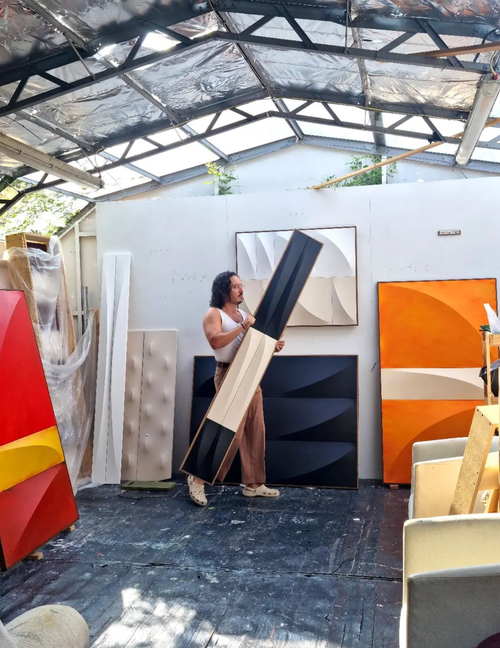
3
1
0
Gallery Representation
About
Charlie Oscar Patterson simultaneously produces multiple bodies of work that embrace the history of modernist painting, they are a continuation and combination of minimalism and abstraction that merge sculpture with painting. Downplaying the ...
Charlie Oscar Patterson simultaneously produces multiple bodies of work that embrace the history of modernist painting, they are a continuation and combination of minimalism and abstraction that merge sculpture with painting. Downplaying the decorative qualities of the canvas while at the same time playing on its physicality, Patterson leads us on a journey to discover new perceptions of space and light. While colour is one of Patterson’s foremost visual markers, each artwork plays a “sound” through rhythmic intervention, and their movement through time is captured by the shifting light. In Patterson’s work, light becomes a conduit, a vehicle for transporting colour from the smooth surface of the object to our discerning eye. His deep fascination with colour is first and foremost an exploration of light since light is colour. Building up many layers of dense oil paint, Patterson cleverly focuses on the use of a single colour tone to emphasise the work’s surface as well as its highlights and shadow - the canvas brought to life as you move around the artwork and the light changes. This focused combination of colour and shape speaks to his concern with emphasizing the physical presence of the artwork itself, rather than an expression of the artist’s voice – his monochrome pieces are a great example of this. In Patterson’s work light completes the artwork and at the same time transforms it. One can better understand Patterson’s practice by perceiving light more like sound. In the same way you make an instrument to produce a specific sound, Patterson’s artworks are instruments that play the light. Describing his artistic process, Patterson reflects that, “building the frame is like writing the score and painting is like playing for the first time.” Like the keys of a piano, the three-dimensional extensions of the canvas act as tools for Patterson to play with light, offering infinite possibilities and variations of shadow and tonality. Composing his artworks like a musical score, Patterson’s architectures become instruments that can be heard playing solid rhythms of colour to the beat of light and shadow. Patterson’s work is experiential. Through his gesture the work becomes an object, an installation – it acquires a certain presence that involves the spectator as they share the same space.
Curriculum Vitae
View AllBorn in 1991 in Britain.
